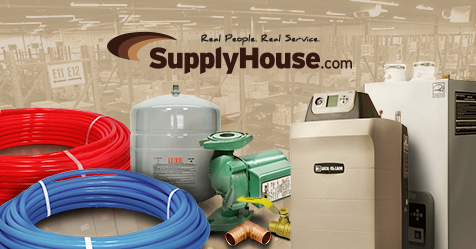Kengie
New Member
Hi there,
I am looking for some second opinion from the wonderful community here.
Previously I was using an oil based boiler and recently converted to a Naiven combi boiler NCB240-130H with a 3 zone smart thermostat and aluminum fin baseboard. While looking at the primary loop of the pipe layout, i notice it seems to be different from what the oil based boiler pipe layout to be. It seems now with the Naiven setup, the heating supply side connects / loops directly into the return side. If I remember correctly, in the oil based boiler setup, the heating supply side would go directly to the baseboard and after completing the loop through the baseboard. It would then return back to the boiler.
In regards to what I'm describe is in the second photo highlighted in the red rectangle.
Things I notice.
1. When previously using the oil based boiler, I would heard the baseboard stretching as I understand the boiler is sending 180F of hot water. Now with the combi boiler, that doesn't happen anymore. With this been said, are there setting to output at 180F with an outdoor sensor?
2. I know that the combi boiler is a mod condensing boiler with a outdoor sensor, but even in single digit temperature. The supply temperature hardly read 180F, it is mostly 155F - 165F.
3. This isn't accurate but placing a thermometer on the baseboard itself, it read 127F on the copper pipe. With supply temperature output of 165F, is it normal that there is a 38F temperature drop? There is about approx. 18 feet of vertical piping as I took the baseboard temperature on the second floor.
4. Another thing I notice is that previously the values was on the supply side when I was using the oil base boiler, while the pumps are located on the return side. The pumps are Grundos Alpha1 with variable 3 speed.
Attached Images:


Thank you for your time and input.
I am looking for some second opinion from the wonderful community here.
Previously I was using an oil based boiler and recently converted to a Naiven combi boiler NCB240-130H with a 3 zone smart thermostat and aluminum fin baseboard. While looking at the primary loop of the pipe layout, i notice it seems to be different from what the oil based boiler pipe layout to be. It seems now with the Naiven setup, the heating supply side connects / loops directly into the return side. If I remember correctly, in the oil based boiler setup, the heating supply side would go directly to the baseboard and after completing the loop through the baseboard. It would then return back to the boiler.
In regards to what I'm describe is in the second photo highlighted in the red rectangle.
Things I notice.
1. When previously using the oil based boiler, I would heard the baseboard stretching as I understand the boiler is sending 180F of hot water. Now with the combi boiler, that doesn't happen anymore. With this been said, are there setting to output at 180F with an outdoor sensor?
2. I know that the combi boiler is a mod condensing boiler with a outdoor sensor, but even in single digit temperature. The supply temperature hardly read 180F, it is mostly 155F - 165F.
3. This isn't accurate but placing a thermometer on the baseboard itself, it read 127F on the copper pipe. With supply temperature output of 165F, is it normal that there is a 38F temperature drop? There is about approx. 18 feet of vertical piping as I took the baseboard temperature on the second floor.
4. Another thing I notice is that previously the values was on the supply side when I was using the oil base boiler, while the pumps are located on the return side. The pumps are Grundos Alpha1 with variable 3 speed.
Attached Images:
Thank you for your time and input.

